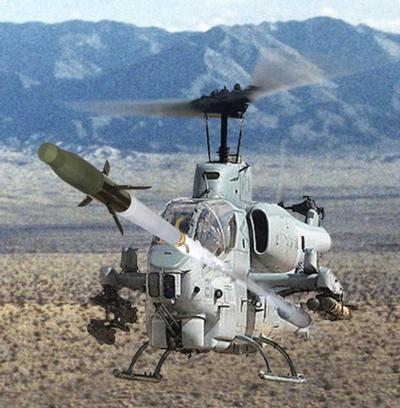Sun, Oct 20, 2013
Ends Joint Capability Demonstration Test For APKWS
CENTCOM released a Military Utility Assessment (MUA) report Sept. 27 which serves as the official document of the fixed wing (FW) tests’ outcome, confirming weapon performance and minimizing safety of flight concerns. The MUA is another step toward a follow-on FW Advanced Precision Kill Weapon System (APKWS) addition to the current Program of Record.

"The entire FW JCTD team should be commended on the successful execution of the test program," Navy Capt. Al Mousseau, PMA-242 program manager said, "the completion of these tests and the conclusion of the JCTD was a significant step towards demonstrating the operational effectiveness for an affordable, fixed wing, forward firing, air-to-ground, low collateral weapon in support of the close air support mission."
The difference between fixed and rotary wing aircraft may be obvious, but the difference between the missiles they carry may not be as apparent. A joint effort between PMA-242’s engineering team here at Naval Air Station Patuxent River and the Air Force Life Cycle Management Center Global Precision Attack Integrated Product Team led to the development and test of an APKWS that could survive the faster and high flight environment of fixed wing aircraft.
“Fixed wing APKWS uses a different guidance control system to compensate for the higher altitude and longer range employments of the weapon,” Cmdr. Alex Dutko, Airborne Rockets /Pyrotechnics deputy program manager for PMA-242 explained. “The deployment mechanism had to be redesigned in order to overcome the higher aerodynamic forces of the fixed wing environment.”
Guidance section tests not only demonstrated design robustness but also helped reduce risk in subsequent live-fire tests, Dutko continued. Rocket testing included ground launches and two different aerial launches, performance and MUA shots. Flight launches were tested from the A-10 Thunderbolt II, AV-8B Harrier II, and F-16 Fighting Falcon. “The variety of tests helped us evaluate weapons systems build up, loading and delivery, and later, illustrate that the weapon would perform, as designed, to hit stationary and moving targets,” Bill Hammersley, the JCTD technical manager, said.
“The success of these tests means that an aircraft pilot will be able to carry seven guided rockets in one launcher that weigh less than a single 500 lb. bomb, allowing for more shots in a single sortie,” added Hammersley.
The conclusion of the JCTD is the next step toward evaluating the addition of another variant to the current APKWS Program of Record.
(Image provided by the U.S. Navy. Artist's rendering of APKWS fire from rotary-wing aircraft)
More News
Airport Marking Aids Markings used on runway and taxiway surfaces to identify a specific runway, a runway threshold, a centerline, a hold line, etc. A runway should be marked in ac>[...]
"It is extremely difficult, if not impossible, for manned aircraft to see a drone while conducting crop-enhancing and other aerial applications at low altitudes and high speeds. We>[...]
Aero Linx: The Skyhawk Association The Skyhawk Association is a non-profit organization founded by former Skyhawk Pilots which is open to anyone with an affinity for the A-4 Skyhaw>[...]
“The T-54A benefits from an active Beechcraft King Air assembly line in Wichita, Kansas, where all required METS avionics and interior modifications are installed on the line>[...]
Aero Linx: Aerostar Owners Association The Association offers the Aerostar Owner a unique opportunity to tap an invaluable source of information concerning the care and feeding of >[...]
 ANN's Daily Aero-Term (04.28.24): Airport Marking Aids
ANN's Daily Aero-Term (04.28.24): Airport Marking Aids Aero-News: Quote of the Day (04.28.24)
Aero-News: Quote of the Day (04.28.24) ANN's Daily Aero-Linx (04.28.24)
ANN's Daily Aero-Linx (04.28.24) Aero-News: Quote of the Day (04.29.24)
Aero-News: Quote of the Day (04.29.24) ANN's Daily Aero-Linx (04.29.24)
ANN's Daily Aero-Linx (04.29.24)



